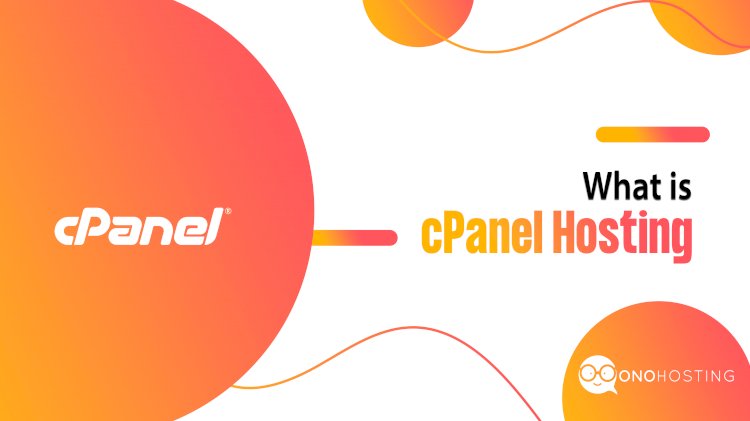What is Cpanel Hosting?
What is cPanel used for

What is Cpanel Hosting?
Table of Contents:
- Is cPanel Free?
- Is cPanel Private?
- How to Login to cPanel?
- What are the Pros and Cons of cPanel?
- How to Install WordPress on cPanel?
- What is Managed WordPress Hosting?
- Should You Use a Managed WordPress Platform?
- Where is cPanel in Managed WordPress Hosting?
cPanel is a web-based Linux-based graphical user interface (GUI) that serves as a control panel for website and server administration. You can use cPanel to publish websites, manage domains, organize online files, and set up email accounts, among other things.
In India, cPanel is one of the most often used control panels. Customers can get cPanel as part of their hosting package from several web hosting companies.
cPanel offers two user interfaces: a cPanel user interface and a Web Host Manager server management interface (WHM). This combination gives customers control over their websites while also giving hosting companies capabilities to maintain their servers.
Because it is a third-party application, cPanel is not free. Most hosting providers, on the other hand, include cPanel as part of their standard packages. There are a few
Is cPanel Free?
Because it is a third-party application, cPanel is not free. Most hosting providers, on the other hand, include cPanel as part of their standard packages. Some companies will give you cPanel for free for the first year, but then charge you for subsequent years.
cPanel raised its rates in 2019, and many web hosting firms are considering migrating away from cPanel in favor of other website control panels.
Is cPanel Private?
Your cPanel account is, indeed, private. If you're the owner of a website, be sure your username and password are safe. This is critical for the security of your website's data and settings.
How to Login to cPanel?
- Using the address bar of your browser, you may access your cPanel. Put your website's address first, then a comma, and then 2083. The URL for your cPanel would be https://yoursite.com:2083.
- You can also access your cPanel by adding /Cpanel to the end of your website address. It will look like this when you use this approach to log in to your cPanel: https://yoursite.com/cpanel.
- You can use the IP address instead of the DNS records if you have a new website and the DNS records have not yet propagated on the server. The following is an example of how to access your cPanel through IP: https://10.10.10:2083.
- If you want the cPanel interface to show in a different language, choose it from the drop-down menu at the bottom of the page.
- You might find it useful to bookmark your cPanel page before logging in so you can easily return to it later.
- Enter your username and password on the cPanel login screen and click the login button. You will then be routed to your website control panel, where you can view all of your settings.
What are the Pros and Cons of cPanel?
Pros:
- An easy-to-use UI. Various functions are organized into manageable modules in the cPanel interface, making it easy for users to find them. For easy navigation, the cPanel dashboard has straightforward menus and images.
- Exceptionally compatible. cPanel, as one of the most widely used control panels, works with a variety of web browsers, including Google Chrome, Safari, and Mozilla Firefox. Many third-party apps, such as site builders and SEO tools, are also supported by cPanel.
- A wide range of features is available. cPanel allows consumers to execute complex operations such as setting subdomains and FTP accounts, managing MySQL databases, and generating site backups without requiring sophisticated technical knowledge.
- Installation of the software is done automatically. Not only does cPanel come with a lot of functionality, but it also works nicely with Softaculous Apps Installer.
- It gives users access to over 400 apps, including popular content management systems. Softaculous handles all aspects of an application's lifecycle, from installation to updates.
- Dependable support. The cPanel forums and blogs include a wealth of information. There are also dedicated technical manuals for both cPanel and WHM. They demonstrate how to utilize and troubleshoot cPanel products.
Cons:
- Vulnerability in terms of security According to research, the two-factor authentication (2FA) technique used by cPanel is subject to brute force assaults. To avoid this, make sure your cPanel version is always up to date.
- The license is expensive. In comparison to its competitors, cPanel has the most expensive license. If you only need to manage a website, a cPanel hosting plan can save you money because the web host will lend you their cPanel.
- Data loss or corruption is a possibility. During large updates, the cPanel system may inadvertently overwrite server settings and delete all data. This occurs as a result of a failed or crashed hard drive. In such instances, try to restore your web server using a thorough disaster recovery plan.
How to Install WordPress on cPanel?
On the leading web hosting company, we've published a detailed step-by-step explanation on installing WordPress using cPanel. This tutorial will show you how to install WordPress using 1-click scripts like Fantastico, Quickinstall, and Softaculous.
We'll also show you how to install WordPress via FTP for intermediate WordPress users. Finally, we'll show you how to install WordPress on your computer if you're a more advanced user.
What is Managed WordPress Hosting?
Managed WordPress Hosting is a type of hosting that is designed exclusively for WordPress websites. Managed WordPress hosting offers better performance, security, and customer service.
WordPress websites hosted on managed hosting load quicker, are automatically updated, have daily backups, and receive WordPress expert assistance. Because the hosting company is in charge of the website's environment, managed WordPress hosting is more expensive.
Should You Use a Managed WordPress Platform?
The answer is straightforward if you're attempting to figure out which hosting package is best for you or if managed WordPress hosting is right for you.
If you're thinking about launching a blog or are just getting started, managed WordPress hosting isn't necessary.
For small to medium-sized enterprises or blogs with a big number of visitors, managed WordPress hosting is a suitable option.
A managed WordPress package is best for businesses and popular sites with a lot of traffic. That's because businesses and popular websites require a hassle-free, high-performing website to focus on customer service and content.
Where is cPanel in Managed WordPress Hosting?
- Because the web host handles basic website hosting responsibilities, you won't find cPanel on a managed WordPress account.
- Installing WordPress, handling server-level caching, creating backups of your website, and managing WordPress core updates are all included in managed WordPress hosting.
- Instead of using the proprietary cPanel, managed to host businesses like WP Engine and Liquid Web to employ their control panels.
- To save money and provide a more integrated service, several web hosting companies are abandoning cPanel in favor of a customized user interface.

























